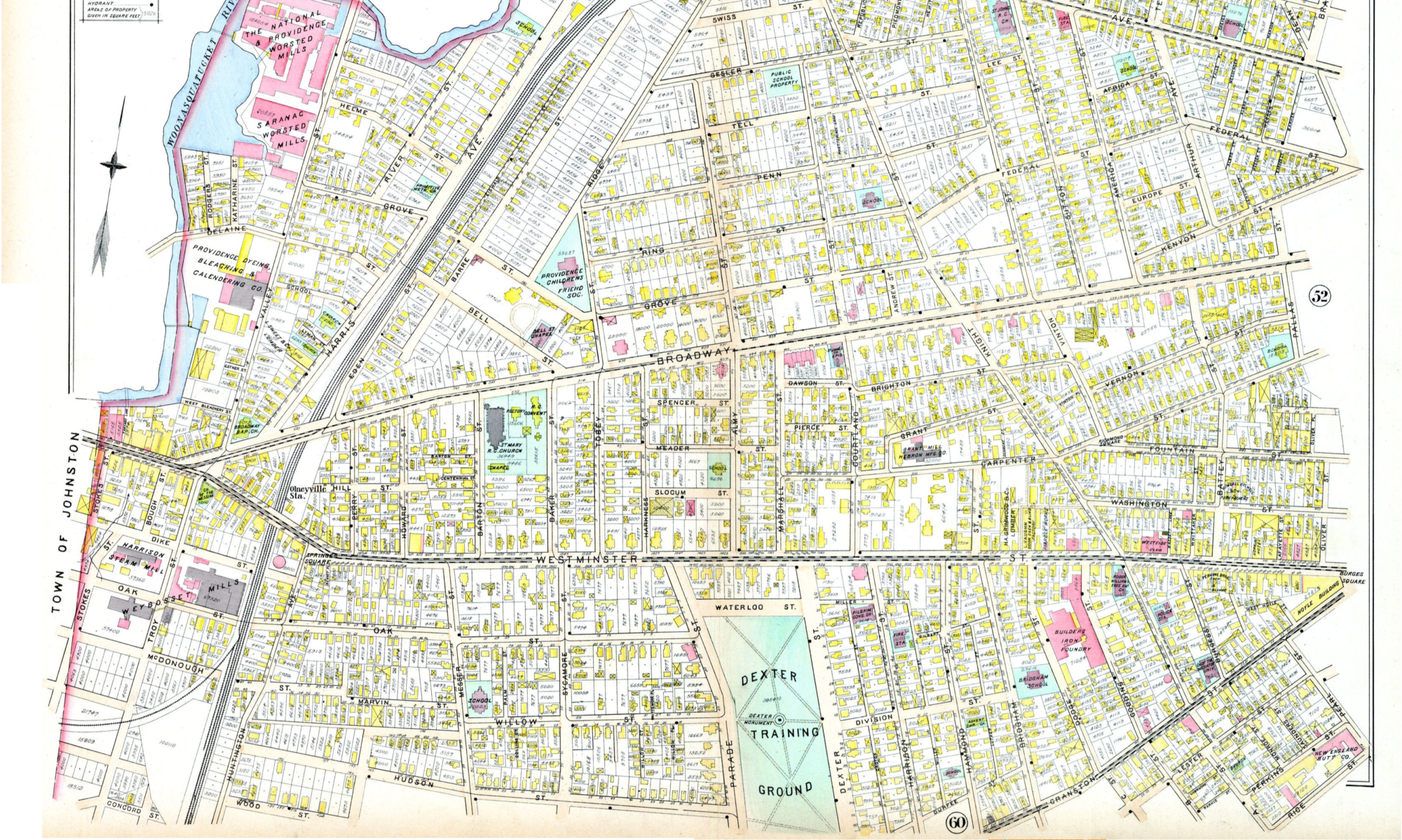In a recent post, I analyzed parking options near the proposed site on the 195 land for a new minor league baseball stadium. I concluded that there are about 7500 parking spaces within a short walk of the location, compared to fewer than 5000 near McCoy Stadium in Pawtucket. Many of those spaces are in private surface lots, and following on the work of Greater City Providence, here are other surface lots deadening downtown:
Good news for downtown
There is some positive movement in replacing desolate surface lots with more productive land use. These locations are colored green above:
- Recent news indicates that Buff Chace of Cornish Associates is planning to buy the old Providence Journal building on Fountain Street, as well as its two associated lots across Fountain Street. He plans to develop these two surface lots into multi-story mixed-use buildings.
- As soon as three purchase-and-sale agreements are complete on the 195 land, development of a parking garage next to Garrahy Courthouse can commence. The emphasis on ground level retail in this plan makes it good news, as structured parking can strengthen the argument for replacing surface lots. Without ground level retail, a garage would be nearly as bad for downtown’s street life as a surface lot.
More work to be done
There is a long way yet to go, however. Real estate development is not easy, and it is based on hard financial numbers. But based on their size and location, here is my ranked list of important surface lots to develop into buildings:
- Westminster & Snow: The two lots on either side of Westminster at Snow Street suck the life out of an otherwise vibrant corridor between Empire Street and Dorrance Street.
- Orange & Friendship: This intersection is in the middle of a bleak parking crater. The prime location near the river and Johnson & Wales ought to make this the perfect location for some street-activating land use.
- Weybosset & Union: The lot directly behind Grants Block receives a lot of exposure due to that parcel’s revitalized use as public space. It is also in one of the most active parts of downtown. A perfect location with many potential customers walking by.
- Washington & Snow: Washington Street is planned as a vibrant cultural corridor, and already has many excellent locations making it active. Despite its relatively small size, this surface lot next to the AS220 building sticks out because the remainder of the streetscape is so continuous.
- Clemence & Washington: Located behind the svelte, 13-foot-deep Arnold Building currently under renovation by the Providence Revolving fund, this lot is back from the main street (a quality that makes it less bad than lots that do front main streets) but its size and contribution to the sketch-factor of Clemence Street drive it up on my list. Besides, alleys like Clemence are sexy places to activate these days, and a structure connecting to the back of the Arnold Building and with attractive entrances on Clemence would be spectacular.
- Broadway, Atwells, and Greene: This intersection feels super dangerous when you’re walking. Part of that is because of the wide roads with a confusing traffic pattern, but it’s also partly because of the two massive lots serving the Providence Public Library and the Hilton Providence. There’s already a pedestrian barrier of the highway right next to these, and they contribute to an unattractive walk between the dense downtown and two of the West Side’s trendiest commercial corridors.
That’s my list for now. There are a number of other surface lots that could also do with redevelopment, especially in the Jewelry District and abutting the 195 land and the highway, but the above parcels are the most ripe for redevelopment.
On-street market pricing
Any mention of parking in downtown Providence would be incomplete without mention of better management of on-street parking. We have outdated meter technology that does not allow for payment by credit card. We have a flat hourly rate for parking, and free parking in the evening, which lead to the most desirable locations being inaccessible during the times when they are most useful. To fix this, we need new meters that allow for easy payment and easily adjusted pricing, and we need City Council to allow parking rates to change based on demand. There is no reason we should have to drive around for 15-30 minutes looking for on-street parking. The City should optimize parking rates for 85% occupancy of each block at all times of day.






